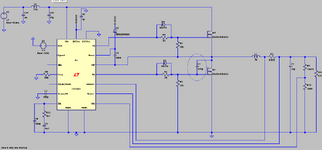cupoftea
Advanced Member level 6

Hi,
We need to do two Buck converters, 17-32Vin, 13.5Vout, 25A out.
Also, 17 – 55Vin, 13.5Vout, 50A out.
I looked at GaN FETs for this, thinking that even if a little more expensive, their far lesser heatsink requirements would mean the overall solution would be cheaper. However, not so.
However, would you agree that the reverse recovery problem of Si FETs with the 55Vin spec (above) will mean GaN will indeed be cheaper? When the top FET switches on into a bottom Si FET, there is a big reverse recovery spike, (especially when Vin is 55v) and it’s the top FET that gets heated up most by this current spike. So would you say, for the 55Vin spec above, a GaN FET solution will indeed be cheaper?
As you know, the bottom FET of a sync Buck shouldnt be GaN, since the "Internal diode" drop is too high , and the bootstrap cap thus gets overcharged, and damages the driver IC. But the Top FET can be GaN.
We need to do two Buck converters, 17-32Vin, 13.5Vout, 25A out.
Also, 17 – 55Vin, 13.5Vout, 50A out.
I looked at GaN FETs for this, thinking that even if a little more expensive, their far lesser heatsink requirements would mean the overall solution would be cheaper. However, not so.
However, would you agree that the reverse recovery problem of Si FETs with the 55Vin spec (above) will mean GaN will indeed be cheaper? When the top FET switches on into a bottom Si FET, there is a big reverse recovery spike, (especially when Vin is 55v) and it’s the top FET that gets heated up most by this current spike. So would you say, for the 55Vin spec above, a GaN FET solution will indeed be cheaper?
As you know, the bottom FET of a sync Buck shouldnt be GaN, since the "Internal diode" drop is too high , and the bootstrap cap thus gets overcharged, and damages the driver IC. But the Top FET can be GaN.
Last edited:




